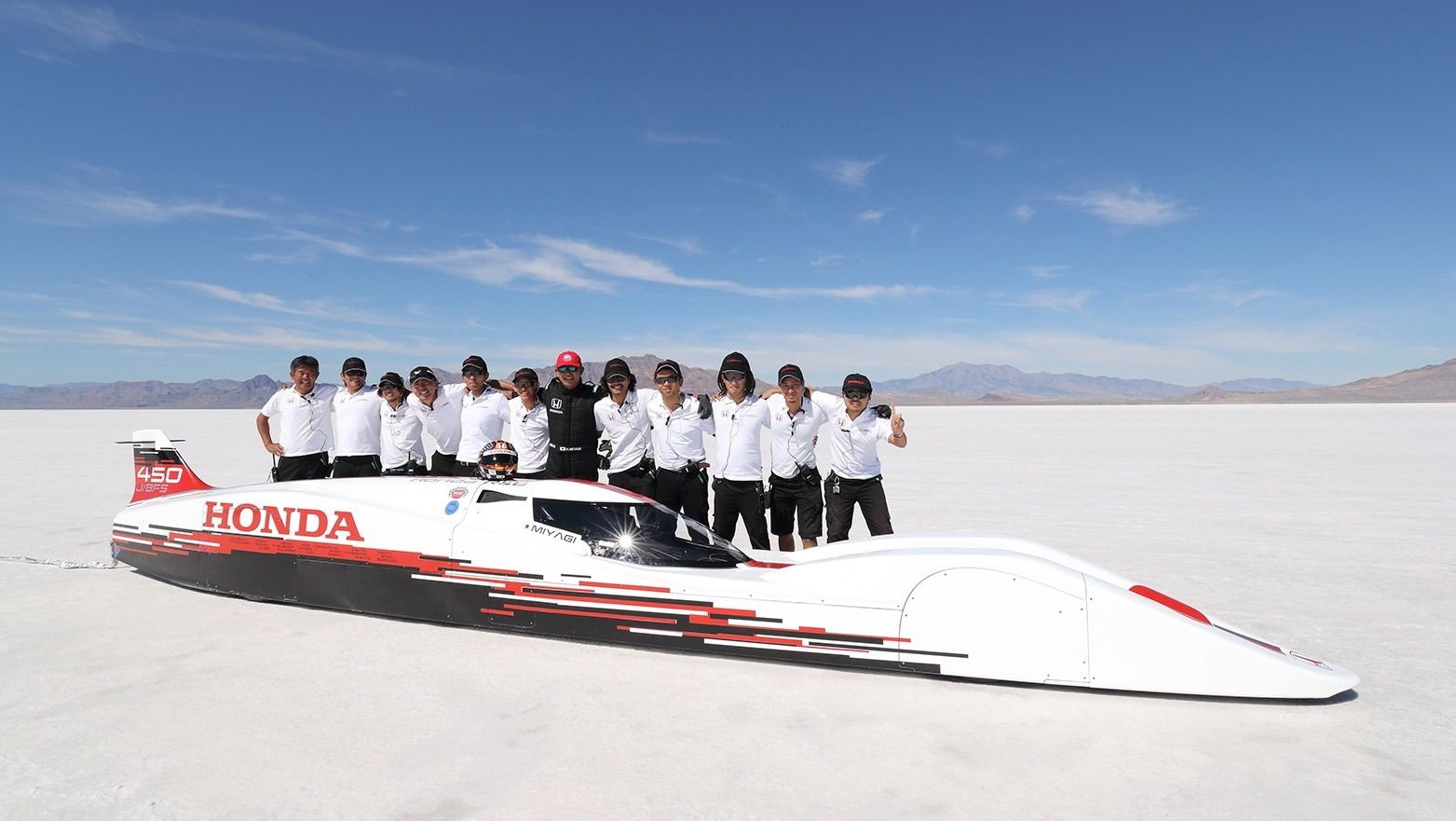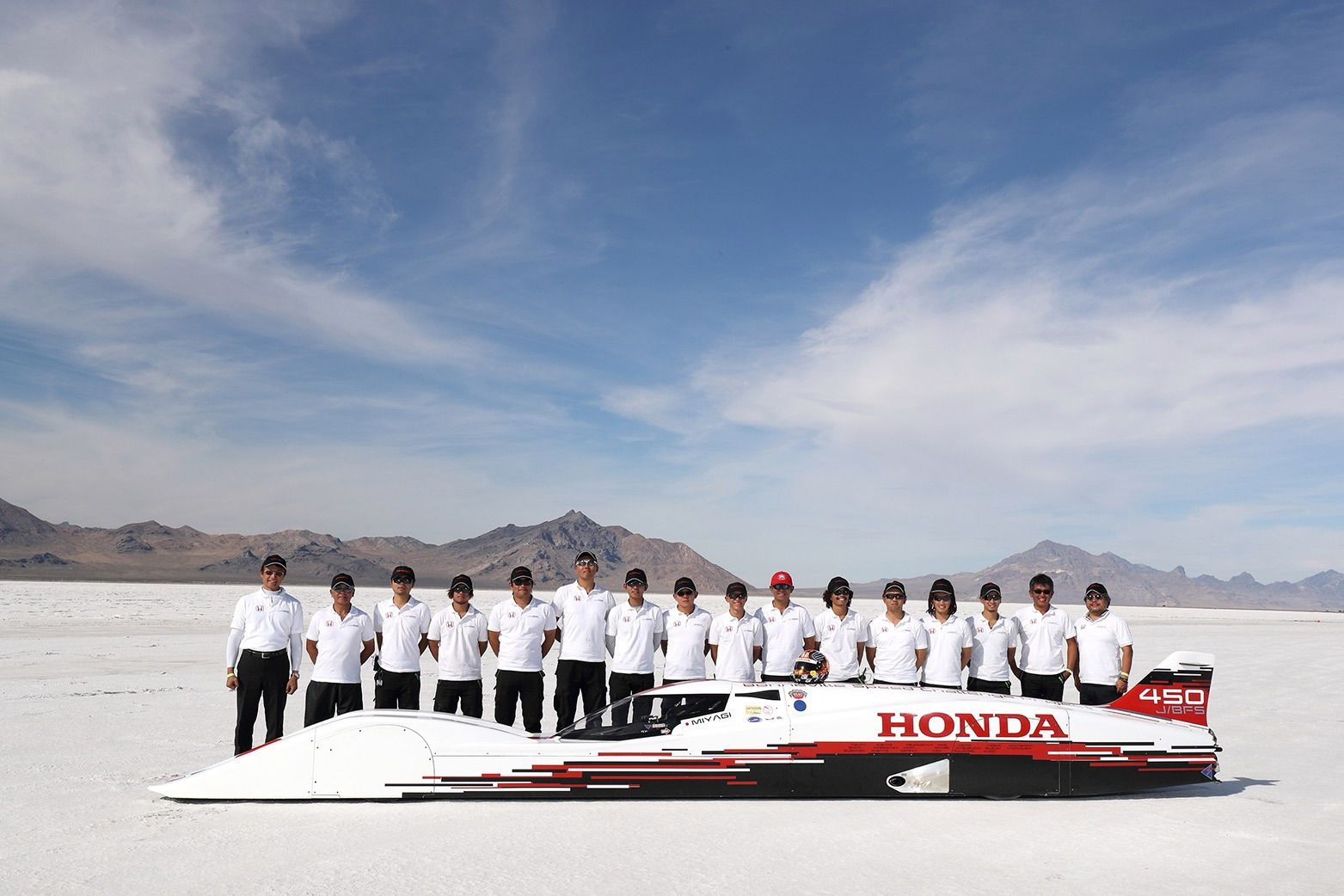Triumph’s attempt to set the land speed record at the Bonneville Salt Flats may have been scuttled, but that wasn’t the case for Honda and its Honda S Dream Streamliner, which set a new FIA world record for a vehicle in its class (Category-A Group-1 Class-4) by hitting an average top speed of 261.875 mph over the flying mile at the Salt Flats. It also posted an average of 261.96 mph over the flying kilometer.
The Dream Streamliner accomplished its goal using a heavily modified version of the 660-cc engine that’s based on the three-cylinder engine that was designed for the Honda S660. Using that 660-cc engine to set the world speed record was always the company’s number one objective, as project leader Keisuke Tsuta admitted in a press release.
The record-setting run may have looked easy as the posted time of 261.865 miles over the flying mile was already faster than the 227.776 mph it set on the first day of the shootout to break the FIA record. Getting there, though, proved to be the difficult part as the team poured through every nook and cranny of the S660 engine and reworked a host of its components to get three times the power than the engine was capable of producing in stock form. Several runs soon took place, including some at the Bonneville Speed Week where the team was unable to reach the speed it needed to break the record.
Despite all of the issues that the team had in preparing the Dream Streamliner, the vehicle stood tall when it was finally time to attempt the world record run, not only becoming the fastest vehicle in its class, but also becoming the fastest vehicle Honda has ever developed, eclipsing the BAR Honda F1 race car that hit an average top speed of 246.9 mph over the flying mile at the Salt Flats in 2006.
Continue after the jump to read the full story.
Good things to come to those who are patient
Honda's record-setting run is a tremendous validation for the company as it reinforces the belief within the Japanese automaker that it is capable of big things if it sets its mind to it. The accomplishment is especially more impressive considering all of the problems the team encountered along the way.
There was the issue with the engine. There was the issue with the streamliner’s canopy design. There was the failed attempt during the Bonneville Speed Week. All of these problems could’ve forced Honda to raise its hands and call off the whole thing. But it soldiered on and the results have certainly made it all worth it for Honda.
And for what it’s worth, the recognized record average top speed wasn’t the fastest the team achieved during its run. The streamliner actually went quicker on one of its late runs, reaching an average top speed of 266 mph. Unfortunately, that attempt could not be recognized because the car was not able to replicate the speed on its return run as required by FIA regulations.
Still, it’s a tremendous accomplishment and it’s a record that I’m sure a lot of people will be try to topple moving forward.


